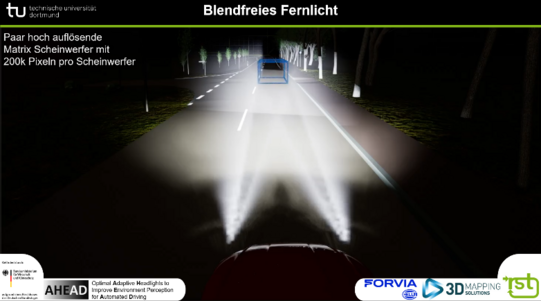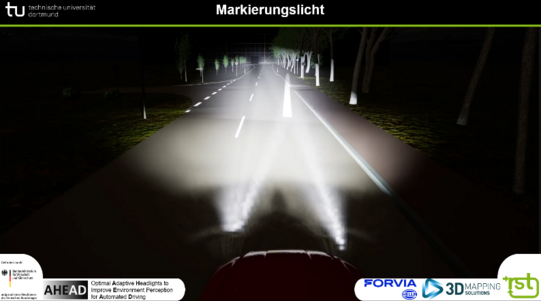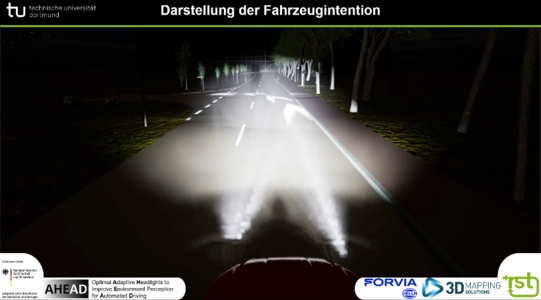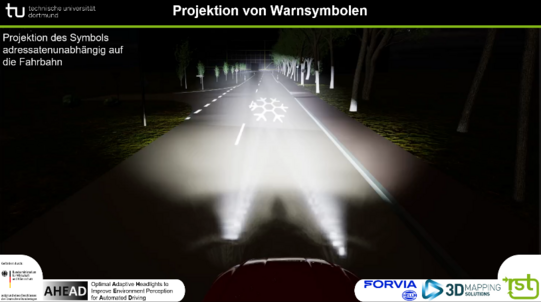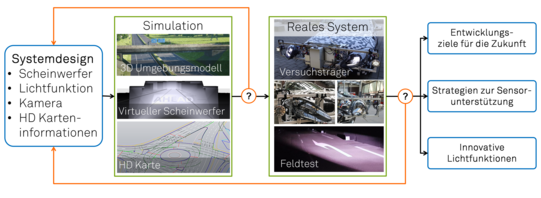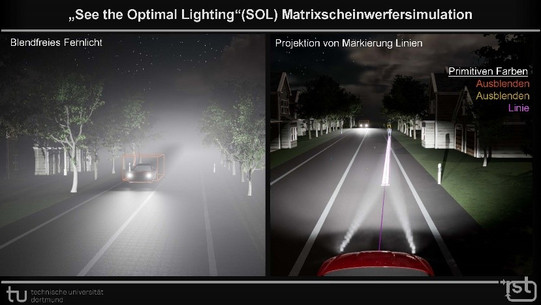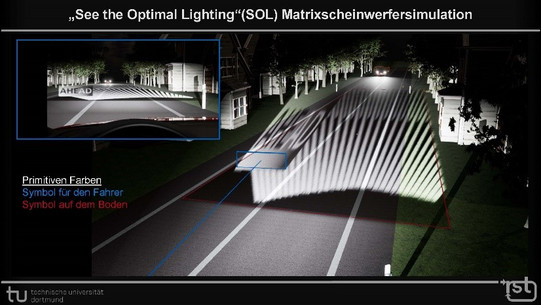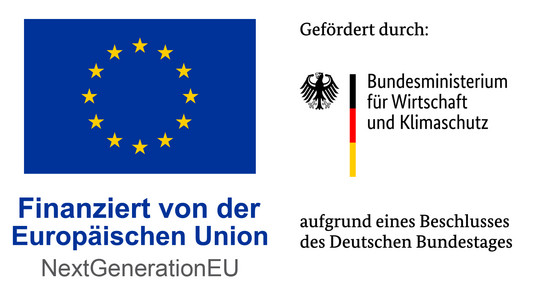Development of objectified "good" lighting functions for (partially) automated driving
Technical progress is constantly increasing the number of individual light sources, the pixels, of a matrix headlamp. This enables the realization of high-definition (HD) matrix headlights, which are also known as DIGITAL LIGHT. Research into (partially) automated driving (AD) enables modern vehicles to perceive their surroundings more and more effectively, which is why the joint project "AHEAD", consisting of the cooperation between TU Dortmund University, HELLA-FORVIA and 3D Mapping Solutions, is researching new innovative HD light functions that can react more optimally to the current situation and support the vehicle or its camera in safely perceiving its surroundings.
Examples of HD lighting functions:
- Blanking out other road users to avoid glare.
- Targeted illumination of unknown objects for better object classification
- Marking of hazards as an indication for the driver
- Projection of the future path of the vehicle
- Projection of symbols
Optimization criteria for HD lighting functions
A "good" lighting function is characterized by various aspects, some of which are contradictory and require consideration by the designer. The research project therefore aims to find "good" system designs from matrix headlights and vehicle sensors in an exploratory manner in order to improve (partially) automated driving. The AHEAD project focuses on the following aspects:
- Safety
- Maximum perception of the environment i.e. brightest possible, selective and wide illumination
- Minimal glare and distraction of all road users
- Acceptance
- High sense of well-being of all traffic participants due to quiet and homogeneous illumination
- High feeling of safety of all persons due to easy perception of the traffic situation
- Efficiency
- Low energy consumption in operation, especially for electromobility
- Low costs in production and preservation for economic use
Simulation-based rapid prototyping of system designs followed by field testing.
The project follows an iterative and agile research approach from a top-down perspective. Promising system designs consisting of HD light system and vehicle camera are evaluated and optimized in two stages. The first stage is the "See the Optimal Lighting" SOL real-time matrix headlamp simulation of dynamic illumination in a highly accurate 3D environment model of a real environment developed by 3D Mapping Solutions and the second is the real field test with a prototype vehicle of HELLA-FORVIA.
Optimal response to the environment through evaluation of HD map information.
The use of highly accurate ambient data from the cloud, such as data on street lamps, the reflective properties of the road surface and buildings, will make it possible to optimally adapt the illumination to the surroundings.
The use of highly accurate ambient data from the cloud, such as data on street lamps, the reflective properties of the road surface and buildings, will make it possible to optimally adapt the illumination to the surroundings.
The combination of HD matrix headlights and accurate map information, e.g., the position of landmarks, will allow the first-person vehicle to predictively adjust illumination dynamically in a selective manner, rather than just reacting. E.g. possible danger spots and dark areas can be selectively better illuminated or traffic objects important for the vehicle sensor system like the landmarks can be highlighted for localization. This improves the environment perception of man and machine and increases traffic safety.
This work is funded by the German Federal Ministry of Economics and Climate Protection (BMWK) as part of the AHEAD project (grant number: 19A21021C). The responsibility for the content of this publication lies with the authors.

![[Translate to English:] [Translate to English:]](/storages/rst-etit/_processed_/e/8/csm_Technologie_RST_2018_339_a0a62aaa2f.jpg)
